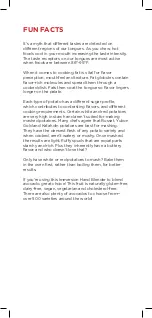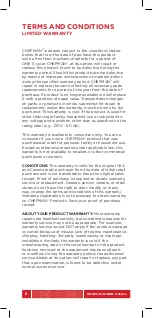
FUN FACTS
It’s a myth that different tastes are detected on
different regions of our tongues. As you chew, hot
foods cool in your mouth increasing the taste intensity.
The taste receptors on our tongues are most active
when foods are between 86°-95°F.
When it comes to cooking, fat is vital for flavor
perception, mouthfeel and texture. Fat globules contain
flavor-rich molecules and spread them through a
cooked dish. Fats then coat the tongue so flavor lingers
longer on the palate.
Each type of potato has a different sugar profile,
which contributes to contrasting flavors, and different
cooking requirements. Certain white and red potatoes
are very high in starch and aren't suited for making
mashed potatoes. Many chefs agree that Russet, Yukon
Gold and Katahdin potatoes are best for mashing.
They have the densest flesh of any potato variety and
when cooked, aren't watery or mushy. Once mashed,
the results are light, fluffy spuds that are equal parts
starchy and rich. Plus they inherently have a buttery
flavor, and who doesn't love that?
Only have white or red potatoes to mash? Bake them
in the oven first, rather than boiling them, for better
results.
If you're using this Immersion Hand Blender to blend
avocado, great choice! This fruit is naturally gluten-free,
dairy-free, vegan, vegetarian and cholesterol-free.
There are also plenty of avocados to choose from—
over 500 varieties around the world!




































